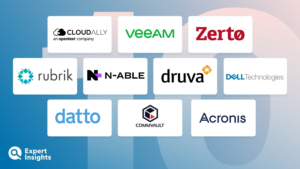Introduction
In today’s digital age, vast amounts of data are generated every second. Big data analytics, a rapidly evolving field, harnesses this data to extract valuable insights, drive informed decision-making, and uncover hidden patterns and trends. This article explores the concept of big data analytics, its benefits, challenges, and the transformative impact it has on businesses and industries across the globe.
Understanding Big Data Analytics
Big data analytics refers to the process of examining and analyzing large and complex datasets to extract meaningful patterns, correlations, and insights. It involves using advanced technologies, algorithms, and computational models to process and interpret massive volumes of structured and unstructured data.

Benefits of Big Data Analytics
- Enhanced Decision-Making: By analyzing vast datasets, organizations can gain valuable insights that enable informed decision-making. These insights can help identify market trends, customer preferences, and operational inefficiencies, leading to more effective strategies and improved business outcomes.
- Improved Customer Experience: Big data analytics empowers businesses to better understand their customers. By analyzing customer behavior, preferences, and sentiment, organizations can personalize their offerings, deliver targeted marketing campaigns, and provide exceptional customer experiences.
- Operational Efficiency: Big data analytics allows businesses to optimize their operations by identifying bottlenecks, streamlining processes, and reducing costs. It enables predictive maintenance, supply chain optimization, and real-time monitoring, leading to improved efficiency and productivity.
- Risk Mitigation: By analyzing historical and real-time data, organizations can identify potential risks and vulnerabilities. This helps in proactive risk management, fraud detection, and compliance monitoring, mitigating potential threats and protecting the organization’s assets.
Challenges of Big Data Analytics
- Data Quality and Integration: Ensuring data accuracy, consistency, and reliability can be a significant challenge. Data may be sourced from diverse systems and formats, making integration complex. Organizations need robust data governance and quality assurance processes to overcome these challenges.
- Data Security and Privacy: With the abundance of data comes the responsibility to protect it. Ensuring data security, privacy, and compliance with regulations is crucial. Organizations must invest in robust cybersecurity measures, encryption techniques, and data anonymization to safeguard sensitive information.
- Scalability and Infrastructure: Processing and analyzing massive datasets require substantial computational resources and infrastructure. Organizations need to invest in scalable storage systems, high-performance computing, and cloud-based solutions to handle the volume and velocity of data.
- Skill Gap: The field of big data analytics demands a specialized skill set. Data scientists, statisticians, and analysts proficient in programming languages, machine learning, and data visualization are in high demand. Organizations face challenges in recruiting and retaining skilled professionals.
Transforming Insights into Action
To harness the full potential of big data analytics, organizations must follow a systematic approach:
- Define Objectives: Clearly define the business goals and objectives for the analytics initiative. Identify the key questions to be answered and the outcomes expected.
- Data Collection and Integration: Identify and collect relevant data from various sources. Ensure data quality, integrity, and compatibility for seamless integration.
- Data Exploration and Analysis: Apply statistical models, algorithms, and machine learning techniques to uncover patterns, correlations, and insights. Visualize data to communicate findings effectively.
- Actionable Insights: Translate insights into actionable strategies. Develop data-driven recommendations, business plans, and initiatives that align with the organization’s objectives.
- Monitor and Iterate: Continuously monitor and evaluate the effectiveness of implemented strategies. Incorporate feedback and refine approaches to drive continuous improvement.
Conclusion
Big data analytics is a game-changer in today’s data-driven world. By leveraging the power of vast and diverse datasets, organizations can gain unprecedented insights, transform decision-making, and unlock new opportunities. However, harnessing the potential of big data analytics requires addressing challenges such as data quality, security, infrastructure, and skills. By overcoming these hurdles, organizations can pave the way for innovation, competitiveness, and growth, ushering in a new era of data-driven success.



